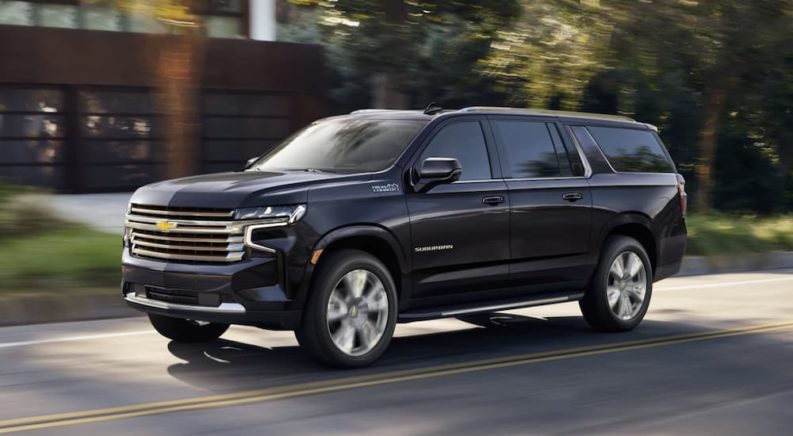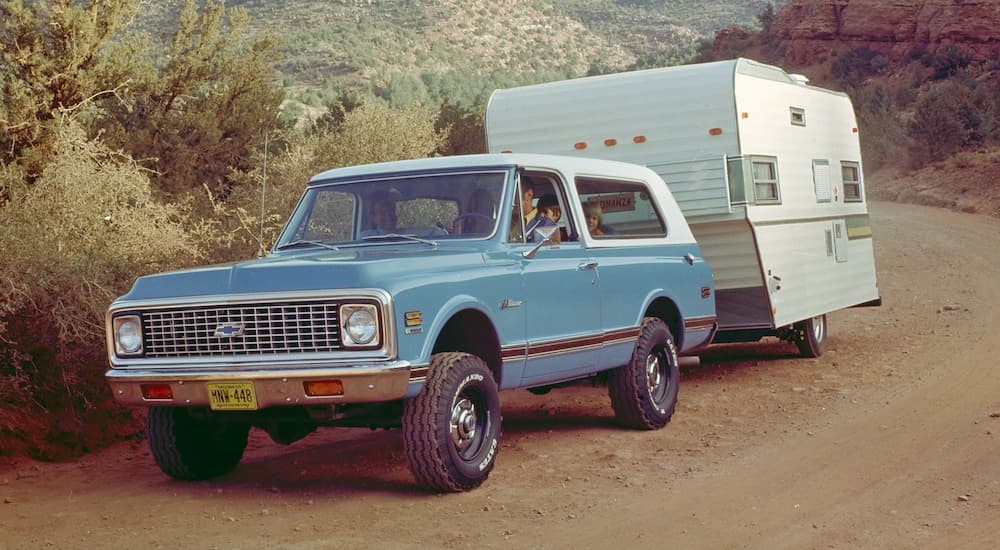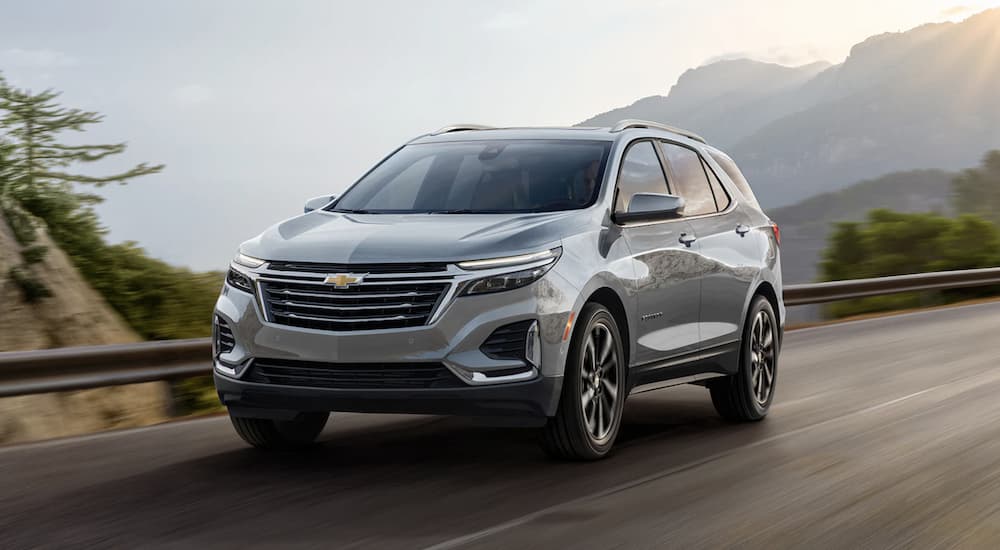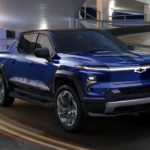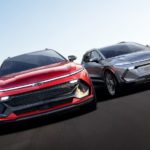With over 100 years in the business, Chevy knows a thing or two about innovation. The bowtie brand has been producing some of the country’s most beloved cars, trucks, and SUVs since 1911 and breaking new ground every step of the way. One doesn’t need to look too hard to find Chevy models that have had a game-changing effect on the industry, from the rugged Silverado pickups––consistently ranked as one of the country’s best-selling vehicles––to the high-performance Corvette, which was one of the first sports cars to feature a fiberglass body.
This unorthodox approach to design has made Chevy a mainstay in the American automotive industry, but too often these stories are lost to history as drivers focus more on the latest and greatest models rather than delving into the automakers’ considerable history. That all changes now as we explore three Chevy models that have had an undeniable impact on not only Chevy’s history but that of the industry as a whole. Read on for a few interesting entries from the brand’s archives that’ll have you searching “used Chevy SUV dealer near me” before you know it.
Chevy Suburban
Leading the Way In: Passenger and Cargo Room, All-Steel Construction
When you’re talking about influential Chevy models, it’s hard to beat the Suburban. Famous the world over for its size and power, the Suburban became something of a status symbol in the ’90s, though its history stretches back much further. To fully understand how game-changing the Suburban was, you need to start with the humble station wagon. While those wood-paneled precursors to the minivan might not have a lot in common with the hulking Suburban on the surface, they play an important role in the SUV’s early development.
True to their name, station wagons were originally used to ferry passengers back and forth to the train station during the height of America’s railroad age. Designed to accommodate passengers and all their cargo, station wagons operated like taxis and were typically built with a wooden frame mounted on a light truck chassis. Chevy wasn’t the first automaker to produce a truck-based station wagon––in fact, the “Suburban” name was used by a number of brands in the early 20th century, including Dodge, GMC, Plymouth, and Studebaker––but it would perfect them.
Chevy’s major innovation was to replace the station wagon’s wooden frame with a steel body starting in 1935. It might seem like a no-brainer today, but it was a major game-changer at the time, with the all-steel construction giving Chevy’s Suburban superior strength and durability while still being affordable. The trend caught on, and within a couple of decades, nearly every station wagon had switched over to Chevy’s groundbreaking construction technique. Chevy was awarded the exclusive trademark for the Suburban name in 1988, though by then, it looked a lot different than its station wagon ancestors. Chevy upgraded the model into a full-size SUV in 1967 to make room in the lineup for the smaller K5 Blazer, but it remained just as capable as ever with three rows of seating, a full pickup frame, and a brawny V8 engine. Few vehicles on the road today can match the pure size and power of the Suburban, which is a full 20 inches longer than Chevy’s second-largest model, the Tahoe.
As the Suburban’s reputation grew throughout the SUV boom of the ’90s, Chevy sought to differentiate itself from the growing competition by focusing on the model’s luxury credentials. With an MSRP of over $40,000, drivers began to expect more out of Chevy’s full-size SUV, and the automaker delivered. Well-appointed interiors became the standard, and that continues to this day, with many Suburbans featuring heated bucket seats, leather interiors, a hands-free programmable liftgate, cutting-edge GPS, infotainment and safety technology, and more. Best of all, the Suburban is just as capable as ever, with seating for nine and the ability to tow as much as 8,300 pounds thanks to its 5.3-liter V8 engine.
Chevy K5 Blazer
Leading the Way In: Designing the Modern SUV
Given its dominance throughout the ’90s, younger drivers will be forgiven for thinking that the Blazer essentially created the SUV class. That said, they’re not totally wrong. While the Ford Bronco is typically recognized as the first modern SUV, it was the K5 Blazer that truly changed the game when it hit the market in 1969.
Chevy was eager to enter the SUV market after it saw the success that Ford, Jeep, and other automakers enjoyed with their early models, and it didn’t want to waste any time. Designing an entirely new type of vehicle from the ground up would have put Chevy at a distinct disadvantage, so engineers delved into the parts bin to cobble together the first-gen K5 Blazer. That would turn out to be a fortuitous move for Chevy as the short-box K10 pickup chassis they settled on offered a number of advantages over the competition.
First off, it was a lot bigger, giving drivers all the passenger and cargo space they could ask for while still delivering on the “sport” aspect of the “sport utility” equation thanks to its rugged pickup frame. The SUV’s wider track and longer wheelbase also allowed the K5 Blazer to excel on paved surfaces, where its size made for a smoother, more comfortable ride. The Blazer had a removable top and also featured a three-speed automatic transmission which, at the time, was considered quite the luxury in the segment. The SUV started off with a four-wheel drive setup but added rear-wheel drive as a means of improving the Blazer’s handling a couple of years after its debut.
The public response was enthusiastic and almost instantaneous, with the Blazer becoming the country’s best-selling SUV soon after its debut. Other automakers rushed to follow in Chevy’s footsteps, with fellow General Motors-owned brand GMC rolling out their Jimmy SUV in 1970, but few could match the Blazer’s success. By the end of its first-generation run, the Blazer would increase sales tenfold, cementing Chevy’s reputation in the segment and paving the way for things to come.
At this point, you might be asking yourself, isn’t the Blazer a crossover, not a full-size SUV? Well, yes and no. The original K5 Blazer went through three generations and, by 1992, had dropped the “K5” from the name to become simply the Blazer. At this point, the once-innovative Blazer had become a little outdated as drivers gravitated towards four-door SUVs over two-door models. Chevy discontinued the Blazer in 1995, relaunching the model as the new four-door, full-size Chevy Tahoe. So what about those sporty new Blazers you see on the streets today?
Chevy revived the Blazer name in 2019 to create a new crossover SUV that fits between the Traverse and Equinox in Chevy’s crossover lineup. While it might lack the body-on-frame construction of its predecessor, the new Blazer is just as capable as ever with a muscular 3.6-liter V6 engine that boasts 305 horsepower and a towing capacity of 4,500 pounds. Add in some legit off-road capability, an adaptive all-wheel drive system, and five selectable driving modes, and you have a worthy successor to the SUV that transformed the class some 50 years ago.
Chevy Equinox
Leading the Way In: Bringing Crossovers to the Masses
A relative newcomer to Chevy’s lineup, at least when compared with longstanding models like the Suburban and Blazer, the Equinox was Chevy’s first entry into the booming crossover segment. Given Chevy’s history for innovation, the Equinox’s success should come as little surprise. The brand’s midsize SUV wasn’t the industry’s first crossover, but it was widely regarded as one of the best, with Chevy seamlessly fusing everything there is to love about SUVs and sedans into one attractive package.
The first-generation Equinox was nimble and good on gas while still offering the ride height and light off-road capability that had so long drawn drivers to the SUV segment. In fact, the original Equinox was the largest model in the midsize crossover class and was also exceedingly reliable, which is an especially impressive feat given the still-new crossover construction technique. The SUV was available in both two-wheel and four-wheel drive configurations.
While the 3.4-liter V6 engine provided a respectable 185 horsepower, those seeking a little more oomph could opt for the Sport model, which upped the motor to a 3.6-liter with 40 percent more power (or 264 horsepower, to be precise). The Equinox Sport also featured a performance-tuned suspension, front and rear body kits, and a ride height that was one inch lower than the base model to improve the model’s aerodynamic properties. This sort of customization went a long way in broadening the SUV’s appeal, and sales remained strong throughout the first generation.
The second-gen Equinox featured a number of changes, including a new, stiffer platform and upgraded direct injection engines that gave the new version improved gas mileage. The Equinox’s profile remained as high as ever, with the SUV becoming the brand’s third best-selling model by 2014, but Chevy wasn’t done tinkering just yet.
The third-generation Equinox saw the most dramatic changes to date, with Chevy downsizing the SUV from a midsize model to a compact. The smaller, lighter body made the SUV a more practical choice for urban driving while upping the fuel economy to an impressive 26 MPG in the city and 31 MPG on the highway when equipped with the 1.5-liter four-cylinder engine. Still, drivers who are looking for a little more heavy-duty performance can go with the available 2.0-liter turbocharged engine, which increases the SUV’s maximum towing capacity to an impressive 3,500 pounds.
Chevy continues to evolve the Equinox to this day, with a forthcoming EV model marking the SUV’s latest transformation. The 2024 model will go on sale in late 2023 and is expected to be a real departure from the gas-powered model when it comes to design and styling. While GM hasn’t shared all the details quite yet, we do know that the compact crossover EV will be based on the same GM Ultium platform as the Chevrolet Blazer EV and Cadillac Lyriq. The EV version of the Equinox will feature a longer wheelbase and overall length than its gas-powered cousin, giving drivers plenty of interior space. The Equinox EV is expected to have 300 miles of range, Super Cruise hands-free driving technology, a 19.2-kW onboard charger, and, best of all, will start at around $30,000. The price goes a long way in showcasing GM’s commitment to a cleaner, more sustainable future, and the Equinox will fit in well with Chevy’s full lineup of EV offerings that include the Silverado EV, Blazer EV, Bolt EV, and Bolt EUV.
Successful Manufacturing Time and Time Again
With the Suburban, Chevy proved just how far an experienced automaker could evolve the humble station wagon. The K5 Blazer might have started out as Chevy’s attempt to play catch-up with the emerging SUV trend, but it ended in an unexpectedly capable model that turned the fledgling category on its head. The Equinox performed much the same trick for the crossover class, showing drivers that the space between full-size SUVs and sedans was ripe for innovation. With such a strong track record to its name, we’re always intrigued to see what Chevy will roll out next. The all-electric vehicle market is particularly well-poised for an intervention from Chevy, and while the Bolt EV and EUV have proved popular, there’s certainly a lot more room for creativity as the category comes into its own. No matter what the future might have in store, you can count on Chevy continuing to push things forward as it has for well over 100 years.

